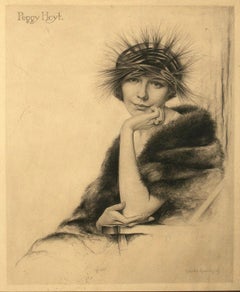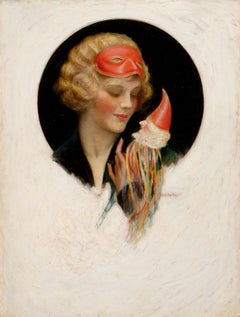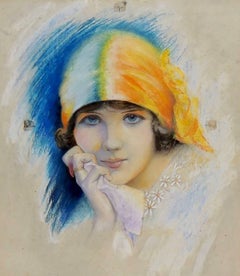Charles Sheldon Art
Charles Sheldon was a prolific American illustrator, born in 1889. He created many movie magazine covers featuring Golden Age Hollywood icons. The pastels he created for Photoplay, from 1925–30, included glamorous depictions of Hollywood film stars, like Clara Bow, Mae West, Jean Harlow, Greta Garbo, Gilda Gray, Mary Pickford and numerous other Hollywood enchantresses. Unlike many movie magazine illustrators, who primarily worked off publicity photos, many of these stars sat for him. Along with his work for Photoplay, the artist worked for Screenland, Movie Classic and Radio Digest magazines.
1920s Charles Sheldon Art
Charcoal, Pencil
1920s Other Art Style Charles Sheldon Art
Canvas, Oil
Early 20th Century Charles Sheldon Art
Paper, Ink, Pen
20th Century Charles Sheldon Art
Board, Pastel
1920s Charles Sheldon Art
Pastel, Board
Early 20th Century Charles Sheldon Art
Pastel, Board
21st Century and Contemporary Contemporary Charles Sheldon Art
Canvas, Oil
1930s Modern Charles Sheldon Art
Oil, Canvas
1940s Modern Charles Sheldon Art
Pastel, Cardboard, Archival Paper
2010s Contemporary Charles Sheldon Art
Crayon, Pastel, Cardboard
Mid-19th Century Academic Charles Sheldon Art
Paper, Charcoal, Carbon Pencil
Early 20th Century Charles Sheldon Art
Ink, Pen, Paper
1920s Art Deco Charles Sheldon Art
Paper, Charcoal, Watercolor, Gouache, Pencil
1930s Charles Sheldon Art
Ink, Paper, Pen
1950s Performance Charles Sheldon Art
Paper, Ink, Pen
1980s Pop Art Charles Sheldon Art
Paper, Ink, Permanent Marker
Late 20th Century Pop Art Charles Sheldon Art
Charcoal, Paper, Carbon Pencil
19th Century Other Art Style Charles Sheldon Art
Paper, Charcoal, Pencil



